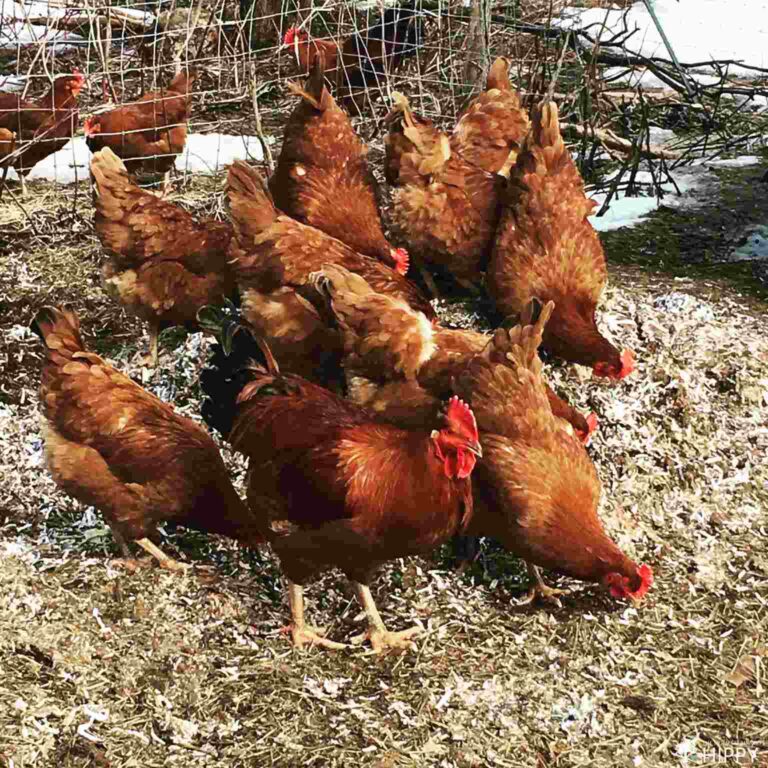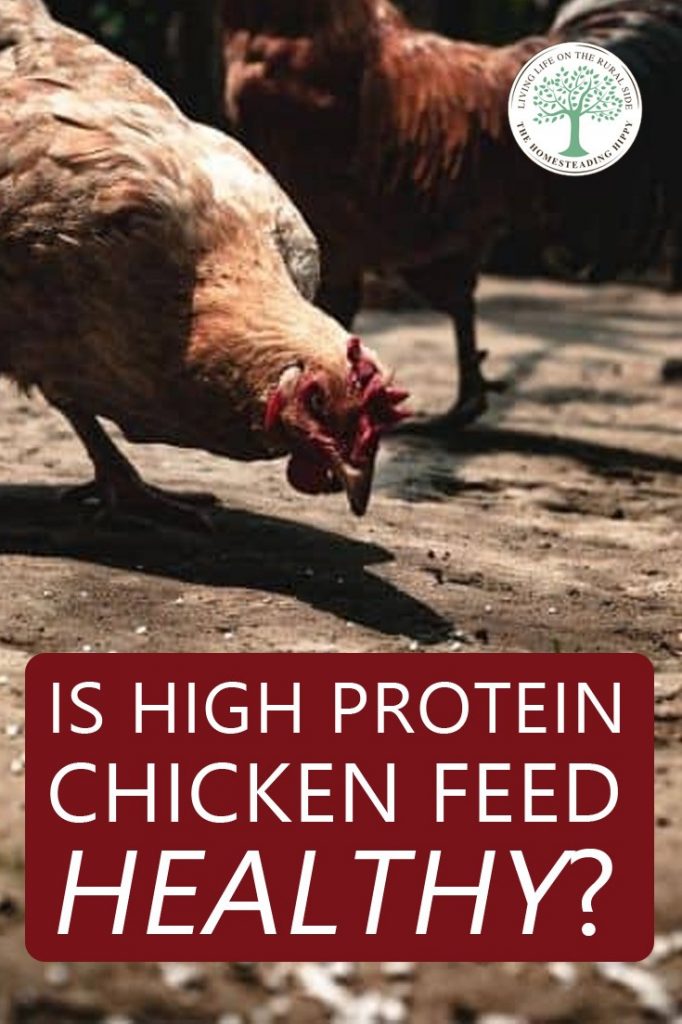If you’re trying to figure out what to feed your flock of chickens, you might feel overwhelmed by the wealth of information out there. Don’t feed high-protein food. Feed high protein feed! Well, feed it in moderation. Only feed it during molting.

The information is exhausting when you try to find the answer to the simple question – is high protein chicken feed healthy?
Yes, high protein chicken feed is healthy. But like everything in life, high protein feed should only be fed in moderation and at the right times.
Ensure the right protein content in your feed is important for raising a healthy flock. Choosing a commercial ratio is the simplest way to provide an adequate amount of protein, but it’s not the only way.
Plus, there’s some variation in what chickens need. We’ll walk you through all the specifics in this article.
Ideal Protein for Chickens by Age
When you’re trying to figure out if high protein chicken feed is healthy, you might find yourself overwhelmed because there’s no clear answer to that question. The reason why there is no clear answer is because protein requirements vary by age.
Chicks that are younger than six weeks old need the most amount of protein – up to 22%.
Those that are seven weeks older and not laying yet need between 14 and 16% protein, while those who are laying need 15 to 18%. Chickens who are being raised for slaughter need around 16% protein.
If you’re trying to figure out how much protein your chickens need just check the package. Usually, the formulations will be labeled with things like “chick starter” or “layer” and they’re designed to have the right amount of protein.
Why the differences in age? Chicks grow rapidly and producing new feathers. Therefore, they need a ton of protein.
Birds who are no longer chicks but aren’t yet laying don’t need quite as much because they don’t need the extra protein to produce eggs, and they also don’t need it for feather growth.
Adding a commercial feed is one of the best ways to ensure your chickens get the right amount of protein.
If you allow them to exclusively free-range, it’s going to be tougher for you to control what they eat. they might eat less protein if they’re nibbling on berries, but they might eat too much if they find a yummy mouse to snack on.
When to Increase Protein Content
There are certain times of the year when you may want to increase the amount of protein in your chickens’ food.
This often does not need to be by substantial amounts and can be done simply by adding a few treats (like mealworms or sunflower seeds) here and there.
When your chickens are molting, they will be losing their old feathers and putting on new ones. During this time, they need a bit more protein in order to regrow their feathers and also to stay warm in the process. Molting usually happens in the fall.
Remember, eggs are made up of about 90% protein, so your chicken will be pushing all of its protein resources into making features. If you don’t increase protein content during this time, you may find that your chickens stop laying or that your chickens become listless.
Similarly, when the temperatures drop – particularly if you live in an area that experiences very cold winters – you are going to want to invest in a high-protein feed to help your chickens maintain fair stores and continue to lay eggs.
In addition to the need to stay warm, winter presents another challenge in relation to protein stores because your chickens won’t be able to free-range.
Their intake of protein-rich snacks, like mealworms and crickets, will then be reduced.
How to Increase Protein in a Chicken’s Diet
There are a few ways you can increase protein in your chickens’ diet. The first- which I’ll discuss in more detail below- is to add a few high protein snacks.
There are all kinds of supplements you can add, including things like black soldier fly larvae, mealworms, pumpkin seeds, and more.
You can also ferment your own chicken feed. Fermented chicken feed increases the availability of vital nutrients in the feed you are already using (as does sprouting your own grain).
Fermenting, in particular, increases the absorption of protein along with vitamins K, C, and B.
Another easy way to increase protein is to allow your chickens to be raised on pasture. Bugs are incredibly rich in protein, and chickens love eating them!
Raising your chickens on pasture can also help them get enough exercise to prevent issues related to excess weight.
What Are Some High-Protein Snacks I Can Feed My Chickens?
There are plenty of ways you can supplement extra protein to your chickens’ diet without having to switch to a new or incorrect feed.
Cooked eggs are one such option. You should avoid feeding your chickens raw eggs, since this can encourage them to eat their own eggs. Once cooked, the eggs will be in a form that is totally unrecognizable to your chickens. They’re also super high in protein – about 91%.
Lots of people feed their chickens mealworms. Mealworms have about 53% protein when they are dried (which is actually more than when they are alive). You can grow your own mealworms at home or you can purchase the dried version online or at a nearby pet store.
You can also feed fish or fish meal. You don’t have to remove the bones but can instead feed the entire fish.
They also have high levels of omega-3 unsaturated fatty oils, which can present health benefits all on their own. Just be careful feeding fish in excess, as some people suggest that it can taint the flavor of the eggs.
Another option is pumpkin seeds. Pumpkin seeds have about 33% protein. Fresh seeds are best, rather than the ones packaged with salt.
For an extra dose of nutrients, you might just want to feed a whole pumpkin. The flesh of a pumpkin is actually believed to have some deworming value.
Some people sprout grains to feed to their chickens, too. Sprouting grains – or lentils – is a great way to decrease your overall chicken feeding expenses. You can stretch your budget by up to 50%, in fact.
It can be done quickly at home simply by soaking grain in some water. Plus, they increase the availability of protein and other nutrients in the grain, helping you and your chickens get more bang for your buck.
What Are the Dangers of High Protein Feed?
In general, a laying hen only needs about 20 grams of protein each day. Feed any more than that, and you’re not only going to be wasting money, but you have the potential to cause a wide variety of health issues, too.
For starters, chickens who are constantly fed a diet that’s too high in protein can lead to obesity. This can cause your chickens to develop liver problems and issues laying eggs. A high protein diet can also cause kidney disease and gout.
While a lack of exercise or too many carbohydrates can also cause your chickens to become overweight, overfeeding protein is, without a doubt the most common cause of these health problems in chickens.


Rebekah is a full-time homesteader. On her 22 acres, she raises chickens, sheep, and bees, not to mention she grows a wide variety of veggies. She has a huge greenhouse and does lots of DIY projects with her husband in her ever-growing homesteading endeavor. Learn more about Rebekah here.
